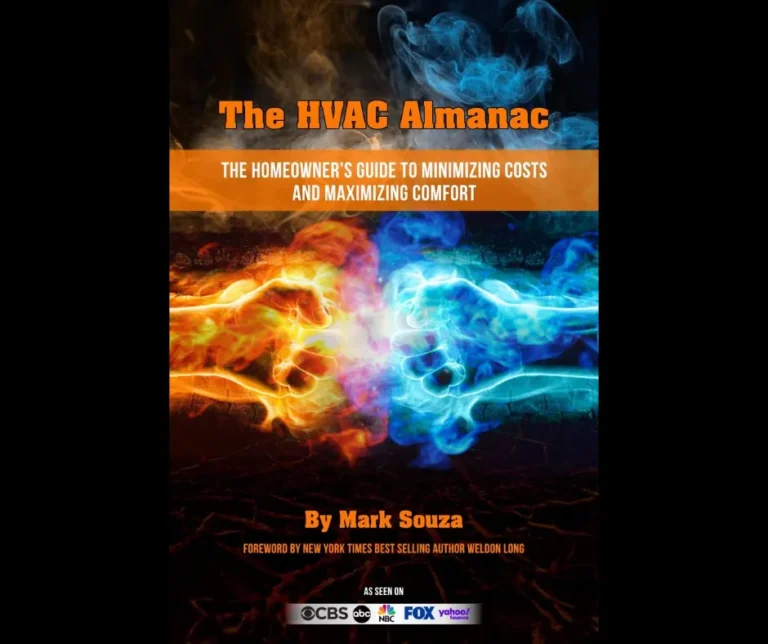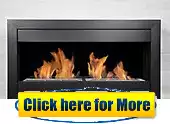Mastering HVAC Troubleshooting
Are you frustrated with constantly having HVAC issues in your home or office?
Do you struggle to find the root cause of the problem and end up spending a fortune on costly repairs?
Well, worry no more because in this article, we will guide you through the process of mastering HVAC troubleshooting.
Whether you’re a seasoned HVAC technician or a homeowner looking to save some money and have a better understanding of your system, this article is for you.
We will provide you with pro tips and tricks for common HVAC issues, helping you become more efficient and effective at troubleshooting.
With the right knowledge and techniques, you can easily identify and fix common issues, saving you time, money, and frustration.
So, put on your problem-solving hat and get ready to become a master in troubleshooting your HVAC system.
Let’s dive into the world of HVAC troubleshooting and discover the secrets to keeping your system running smoothly.
Table of Contents Mastering HVAC Troubleshooting
Identify common HVAC issues easily
To effectively troubleshoot common HVAC issues, it’s important to have a thorough understanding of the system and its components.
Start by checking the air filters, as clogged or dirty filters can lead to restricted airflow and reduced efficiency.
Additionally, pay attention to any unusual noises coming from the unit, which can indicate problems with the motor or fan.
Inspecting the condenser coils for dirt or debris accumulation is also crucial, as this can hinder the system’s ability to cool effectively.
Finally, be mindful of any noticeable temperature inconsistencies throughout your home, as this could point to issues with the thermostat or ductwork.
By staying vigilant and employing these proactive measures, you can quickly identify and address common HVAC issues, ensuring optimal performance and comfort in your living space.
Use pro tips to troubleshoot efficiently
When faced with HVAC issues, utilizing pro tips can greatly enhance your troubleshooting efficiency.
Firstly, ensure you have a comprehensive understanding of the specific problem you are encountering.
Consult reliable resources, such as the “Mastering HVAC Troubleshooting: Pro Tips and Tricks for Common Issues,” which provides valuable insights into common HVAC challenges and their respective solutions.
Additionally, leverage the expertise of experienced HVAC professionals who can offer guidance and advice on effective troubleshooting techniques.
Take advantage of online forums and communities dedicated to HVAC troubleshooting, where you can learn from the experiences and insights of industry experts and fellow homeowners.
By leveraging these pro tips and resources, you can streamline your troubleshooting process and swiftly resolve any HVAC issues that arise.
Save time and money with troubleshooting
Implementing effective troubleshooting strategies can have a significant impact on saving both time and money when it comes to HVAC issues.
By utilizing the knowledge and techniques outlined in the “Mastering HVAC Troubleshooting: Pro Tips and Tricks for Common Issues,” you can quickly identify the root cause of the problem and implement the appropriate solution.
This not only minimizes the downtime caused by HVAC malfunctions but also prevents unnecessary expenses that may arise from delayed repairs or the need for professional assistance.
By taking a proactive approach to troubleshooting, you can address common HVAC issues efficiently, ensuring optimal performance and avoiding costly repairs or replacements.
Improve your HVAC system’s performance
To improve your HVAC system’s performance, it is essential to prioritize regular maintenance and follow a few key strategies.
Start by ensuring that your air filters are clean and free from debris, as clogged filters can restrict airflow and strain the system.
Additionally, check for any air leaks in your ductwork and seal them promptly to prevent energy loss.
Another crucial step is to calibrate your thermostat accurately, ensuring that it is set at the appropriate temperature for optimal efficiency.
Lastly, consider upgrading to a programmable thermostat, which allows you to schedule temperature adjustments based on your daily routine, thereby reducing energy consumption.
By implementing these practices from “Mastering HVAC Troubleshooting: Pro Tips and Tricks for Common Issues,” you can enhance your HVAC system’s performance, increase energy efficiency, and reduce overall operating costs.
Keep your home comfortable year-round
To keep your home comfortable year-round, there are several steps you can take to optimize your HVAC system’s performance.
First, make sure to properly insulate your home to prevent drafts and maintain a consistent indoor temperature.
This will not only enhance comfort but also reduce the workload on your HVAC system.
Additionally, regularly clean and maintain your system to ensure it operates efficiently.
This includes cleaning the outdoor condenser coils, checking and replacing air filters, and scheduling professional maintenance as recommended in “Mastering HVAC Troubleshooting: Pro Tips and Tricks for Common Issues”.
Lastly, consider using a zoning system to customize temperature settings in different areas of your home, allowing for personalized comfort and energy savings.
By implementing these strategies, you can create a comfortable living environment throughout the year and maximize the lifespan of your HVAC system.
In conclusion, mastering HVAC troubleshooting takes time and practice, but these pro tips and tricks can help you tackle common issues with confidence.
Remember to always prioritize safety and follow proper procedures when working on HVAC systems.
By utilizing these tips and staying knowledgeable about the latest industry techniques, you can become a skilled HVAC technician and provide top-notch service to your clients.
Keep learning and honing your skills, and you’ll become a master at troubleshooting HVAC problems in no time.
FAQ
What are some common issues that HVAC systems encounter, and what are some troubleshooting tips to resolve them?
As a homeowner, you may encounter common issues with your HVAC system.
One common issue is a clogged air filter, which can restrict airflow and reduce system efficiency.
To troubleshoot, check and replace the filter regularly.
Another issue could be a malfunctioning thermostat, which can cause inconsistent temperature control.
Ensure the thermostat is set correctly and replace batteries if necessary.
Additionally, dirty condenser coils can reduce cooling performance.
Clean the coils with a gentle brush to resolve this issue.
Lastly, if your system is not producing cool air, check for refrigerant leaks and contact a professional for repairs.
How can HVAC technicians effectively diagnose and troubleshoot electrical problems in HVAC systems?
To effectively diagnose and troubleshoot electrical problems in HVAC systems, you need to follow a systematic approach.
Begin by ensuring your safety with proper protective equipment.
Then, use your knowledge of electrical circuits and components to inspect and test each part of the system.
Start with the power supply, checking for any loose connections or tripped breakers.
Next, inspect the wiring and connections for any signs of damage or overheating.
Use a multimeter to measure voltage, resistance, and continuity across different components.
Finally, analyze the data and compare it with the manufacturer’s specifications to identify any abnormalities.
With patience and attention to detail, you’ll be able to pinpoint and resolve electrical issues in HVAC systems effectively.
What are some pro tips for troubleshooting refrigerant leaks in HVAC systems, and how can they be fixed?
When troubleshooting refrigerant leaks in your HVAC system, there are a few pro tips to keep in mind.
First, locate the leak by using a refrigerant leak detector or soapy water on the connections.
Once the leak is found, repair it by tightening any loose connections or replacing damaged components like valves or O-rings.
Make sure to use the appropriate tools and follow safety guidelines.
After fixing the leak, recharge the system with the correct amount of refrigerant.
Finally, test the system to ensure the leak has been successfully resolved.
Remember to consult a professional if you are unsure or uncomfortable with the troubleshooting process.
How can HVAC technicians identify and resolve airflow issues in HVAC systems?
To identify and resolve airflow issues in HVAC systems, you can start by checking for any obstructions in the ductwork or vents.
Ensure that all vents are open and unobstructed.
Next, check the air filters to see if they are dirty or clogged.
If so, clean or replace them.
You can also inspect the blower motor and fan to ensure they are functioning properly.
Additionally, check for any leaks or gaps in the ductwork that may be causing air loss.
Finally, calibrate and adjust the dampers to optimize airflow.
What are some advanced troubleshooting techniques for complex HVAC problems, and how can technicians master them?
To master advanced troubleshooting techniques for complex HVAC problems, you need to immerse yourself in continuous learning.
Stay updated with the latest industry trends and advancements through workshops, seminars, and online resources.
Develop a deep understanding of HVAC systems, their components, and how they interact.
Practice problem-solving by simulating complex scenarios and analyzing potential solutions.
Seek guidance from experienced technicians and learn from their expertise.
Build a solid foundation of technical knowledge and stay curious.
Mastering advanced troubleshooting techniques requires perseverance, dedication, and a commitment to ongoing skill development.







